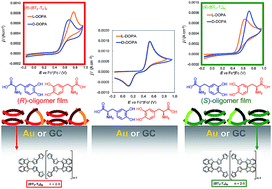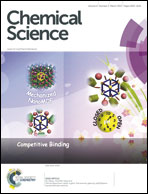Inherently chiral electrodes: the tool for chiral voltammetry
Abstract
2,2′-Bis[2-(5,2′-bithienyl)]-3,3′-bithianaphthene oligomers are a model case of electroactive films endowed with “inherent chirality”, originating from a stereogenic element coinciding with the whole electroactive backbone, thus resulting in impressive manifestations. This study highlights their applicative potentialities as low-cost and easy-to-prepare artificial enantiopure electrode surfaces, which display an unprecedented ability to pronouncedly separate voltammetry peaks of enantiomers of quite different chiral probes of applicative interest, concurrently with linear dynamic ranges for peak currents, affording enantiomer excess determination. Thus inherently chiral enantiopure electrodes can indeed be regarded as a key to chiral voltammetry.


 Please wait while we load your content...
Please wait while we load your content...